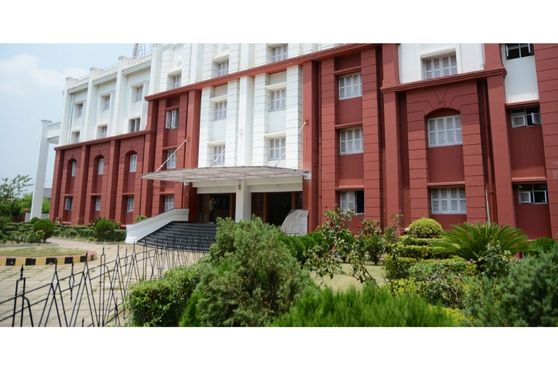The Shifting Paradigms of Technical Education: Prof. Kalyan Mukherjee, OmDayal Group of Institutions


The turn of the century was a time of huge upheaval in the world of computer science, and as more and more industries progressed to first digitisation and then the cloud, this demand has been on an upward curve. Commensurate to that, Engineering schools started to see a rise in enrolment in B.Tech and M.Tech courses with a specialisation in computer engineering.
With this premise, Edugraph sat down to a chat with Prof. Kalyan Kumar Mukherjee, Director, OmDayal Group of Institutions. A practicing architect, a highly knowledgeable educator, he not only shed light on many of the pertinent issues of the day, but also gave us an insight into the culture of innovation, and his institution’s genuine desire to nurture industry-ready talent.
What does the industry demand from recruits?
At the outset, we asked him about the current state of the industry. According to Prof. Mukherjee, the demands of the industry has not so much changed as adapted. While among aspiring students applying to Engineering colleges, there is still a leaning towards computer engineering, he was quick to share how computers and other digital gadgets have become commonplace, to the point that everyone, even a school student is able to operate them with ease.
With the advent of Artificial intelligence, human intervention in programming has reduced significantly and what is now the domain of human intelligence are programming platforms and languages. As these languages change and evolve, with the top one going out of vogue within years to be replaced by another, an engineer’s expertise then lies in understanding the basics of the programming framework, and being able to adapt it.
In a nutshell then, when looking for B.Tech and M.Tech recruits, Prof. Mukherjee says that what the industry looks for are:
The mind-set to innovate?
The innovation mind-set, as Prof. Mukherjee told us, comes from the start up culture. He explains how the numerous start-ups around us today exhibit an ability to come up with new and innovative solutions that large organisations are often unable to achieve, owing primarily to inertia. For a large organisation, this often involves bringing about a paradigm shift, not to mention the significant costs. At that scale, it doesn’t always seem feasible either.
A start-up, with its small, but highly adaptive, work force – is able to achieve the same goals much more easily, providing quick and better results. Predictably then, the world is seeing a number of mergers and acquisitions, as well as takeovers, where large industries are investing a onetime cost into acquiring a start-up that provides the solutions they need.
The changing paradigm in Technical Education
As the paradigm shifts across the industry, the All India Council for Technical Education (AICTE) has of course taken steps to transform engineering and technical education, to make it better suited to industry needs. Working within the perimeter of the established traditional Engineering degrees, the AICTE has laid down certain guidelines to encourage a culture of innovation, or a start-up mind-set. Some of these requirements are:
And what about Architecture?
Being a respected architect by profession himself, Prof. Mukherjee is quick to point out that this field has already been years ahead of Engineering, in the sense that instruction in Architectural courses has been practice-based and experiential almost from its inception. However, he does add that the ambit of Architecture has also expanded significantly, greatly increasing opportunities for students pursuing architectural degrees. In the mainstream, laymen have a very incomplete understanding of the subject.
An architect is, in the trust sense, a design professional. And Prof. Mukherjee enumerates how, with the right specialisation, they can look at out-of-the-box opportunities across industries in:
These are obviously in addition to the more traditional ones:
The bottom line is that whether we talk of Engineering or Architecture, the flavour of the season is ‘Adaptability’. And in this respect, the pioneer in the East is OmDayal Group of Institutions.
The OmDayal group offers a limited number of courses, with the sole intention of providing quality over quantity. The courses they offer at the moment are:
Fostering Innovation at OmDayal Group of Institutions
In keeping with the changing landscape of technical education, the OmDayal group, across their courses, have implemented a number of practices. First and foremost, they are the only institute in the East that takes it as their mission to provide students with a platform for study that is practical oriented. To that end, they have modulated their curriculum, reducing the number of theoretical subjects per semester from 6/7 to 4, and also reducing credits on theory subjects. This has created room for more practical learning and research.
In addition to the educational aspect, there is also special attention given to:
While Prof. Mukherjee took out the time to outline for us the present situation of the industry, it’s needs and the opportunities it provides, through his personal insights, we were able to understand much about the OmDayal Group of Institutions as well. Here are some snippets from the exclusive chat: